| Guðrún Kristjánsdóttir |
 |
 |
|
Oil on canvas 97 x 330 cm |
by Jón Proppé
Guðrún Kristjánsdóttir first took part in a collective exhibition in Kjarvalsstaðir, the Reykjavík Art Museum, in 1983. The art historian and critic Halldór Björn Runólfsson picked out her contribution for comment: "There is not much force to this exhibition, but Guðrún Kristjánsdóttir shows us exquisitely poetic and sincere pictures, made with hand made paper. Though her pictures have been tucked away in a corner they radiate their vigour throughout the whole gallery." (Þjóðviljinn, 1983.) A second collective exhibition in Kjarvalsstaðir in 1985 brought a similar response from another art historian and critic, Aðalsteinn Ingólfsson: "Guðrún Kristjánsdóttir is a strong presence in this exhibition. Her paintings are clear-cut and disciplined, but the strict forms and construction carry great emotional strength."
(DV, 30 September 1985.)
Her first private exhibition was in 1986, also in Kjarvalsstaðir, and again she received favourable comments in the press: "The pictures are carefully crafted and the show as a whole fully consistent and thought-out so there is no need to refer here to any specific work. The quality is uniformly high so it would be impossible to point to any one work that is better than the others." (Bragi Ásgeirsson, Morgunblaðið, October 1986.)
Since then Guðrún Kristjánsdóttir has held private exhibitions every year (two in 1987) in Iceland and abroad. She has always been well received and her works are to be found in every major public collection in Iceland as well as in private collection both in Iceland and abroad. The qualities that have constantly attracted attention to her work are the very ones noted by the critics in these earliest exhibitions: The remarkable discipline and constancy in the execution and the finely honed imagery that distils her expressive gestures to the barest minimum, achieving emotion and evocative force through simple but rigorously thought-out constructions.
Guðrún Kristjánsdóttir's works, whether in paper or paint, are marked by a strict and highly developed sense of form. As many critics have noted, her works tend to evoke echoes of the stricter schools of abstract painting, the geometric abstraction that was popular in Iceland in the 1950s, yet their primary force is in the landscape which somehow seems to inform all her work and to lend it a dimension that transcends the formalism of earlier schools. Landscapes have long been prominent in Icelandic art, and although Guðrún approaches her landscape in an entirely new way, the parallel to the earlier and well-established tradition is clear. But whereas the older painters sought out the specific in the landscape, Guðrún searches for the general, using landscape as a experimental ground to examine the possibilities and limits of simple and sharply defined forms.
Some Thoughts on Mountains
by Pétur Gunnarsson, writer
"Mountains they have, instead of cities," wrote Adam of Bremen of the Icelanders in ad 1070. We Icelanders have, to be sure, acquired our own cities since then but they have never replaced the mountains. On the other hand, for centuries the mountains did service as visual art, so that when the first painters? hands lifted their brushes in Iceland it was the mountains that they portrayed, with a passion no less than that shown by European painters before them for the image of Jesus or the female form. So it's anything but certain that the mountains we meet in their natural surroundings are as untouched by the hand of man as they seem. They may be instead the carefully nurtured product of innumerable works of art. Whether cloaked in blue, dressed in green plaid, covered by a white shift or caught in the process of transition from one stage to another. Of the earth, yet at the same time belonging to the heavens.
Written for the catalogue of Guðrún Kristjánsdóttir's exhibition in Gerðuberg, Iceland, in 1996.
The mountains that appear in Guðrún's paintings are stylised abstractions, not representations. Rather than take the landscape as her starting point she uses it to balance and expand the purely formal needs of the painting. What emerges is really a tension between the two dimensional arrangement of forms in the paintings and the sense of space that is the result of subtle evocations of a landscape.
![]()
Twilight
by Kristín G. Guðnadóttir
The works of Guðrún Kristjánsdóttir (born 1950) are on the borderline that separates the figurative and the abstract. She paints elongated pictures of the landscape where the horizon marks a sharp division of the field. The forms of the landscape are simplified and the colour range narrowed. Some of her works are even more abstract, yet always refer in some way to the forms of nature.
Her painting Twilight from 1993 gives a clue to her treatment of form and subject. The construction seems at first glance to be simple. Four forms or fields of colour cover the painting without intersecting. The surface of the painting is smooth and, with one exception, the forms are monochrome. Despite the somewhat lyrical character of the painting, its construction is clearly related to the geometrical abstraction of the 1950s. Yet, on closer examination, the geometry of the painting yields to an impression of space, the painting gains depth. This in turn leads to a tension between the forms and the space, between abstract formalism and the minimal landscape in the painting. This transition from form to space, the meaning of the painting becomes clearer and the forms that emerge have their origin in landscapes.
From an article published in the periodical Skírnir, spring 1994.
In 1995 Guðrún Kristjánsdóttir held a private exhibition in Gerðarsafn, the municipal museum of Kópavogur. This exhibition in many ways marked a departure from the techniques she had employed in her earlier paintings. While they had most frequently contained definite landscape features - a horizon, sky, water, land - the new paintings seemed at first glance wholly flat, a single background filling the canvas. But on closer inspection they reveal a remarkable depth. It was as though she no longer needed the recognisable landscape to support her rigorous investigation of the relationship between form and space; the tension that her landscapes had achieved were still present here, perhaps more than ever, but freed from the representational aspects of the earlier works.
![]()
Flow on an Incline
by Bragi Ásgeirsson
The outlines of the landscape have long been Guðrún Kristjánsdóttir?s concern. Sky, sea and land have long been clearly defined in her paintings.
I did not expect what now confronted me in the galleries and I think my surprise was shared by most people who have followed Guðrún?s career in recent years. The change was so profound that I had to return several times to digest the new paintings.
"Hillsides" is the name Guðrún gives to her new paintings and it is apt. The paintings show flowing inclines in various colours and vibrant hues that affect the viewer much like the light that one encounters in nature.
The unique simplicity that Guðrún takes as her starting point is demanding and requires great skill if the paintings are to be brought to life. This she has succeeded remarkably well in doing and she is at her best when painting the gradual transitions in the background hues. Remarkably, even the greys come alive and one senses in them a stronger vibrancy than in the more highly coloured paintings. But this is precisely the difference between a competent artist and an amateur; the artist achieves colour in the faintest hues while the amateur renders even the most aggressive colours flat.
Excerpt from a review published in Morgunblaðið in September 1995.
Taken as a whole, Guðrún Kristjánsdóttir's works form a strong oeuvre, consistent and rigorous, though never stagnant. Her formal concerns, her sense of form and construction, combined with the emotional depth that informs all her works, lead her from one stage in her art to the next and at every point one can affirm the clear logic in her development. This became evident at a retrospective exhibition in Gerðuberg, a Reykjavík art centre, in 1996.
![]()
On Mimesis and Metaphor
by Ólafur Gíslason
Guðrún Kristjánsdóttir's exhibitions show a definite development from concrete painting to something approaching landscapes. The more concrete paintings are objective in that they refer to no reality but themselves, the material, the colours and the forms. The landscapes, on the other hand, refer to contours and shapes in the landscape, without actually mimicking them. They have almost no depth, all lines are sharply drawn and the light emanates from the colours themselves instead of appearing as sunlight.
If these paintings do not show "real" landscapes, what meaning can we then ascribe to landscape-like outlines? Are they perhaps only a kind of mask or surface used to express and interpret something the lies beyond them, in our psyche, in the artist's character, or in the history of art itself? If so, then what is this transcendent reality beyond the painting?
We might continue and ask: Is there some relationship between the visual impact of these paintings and our experiences of real landscapes? My answer to this question is that although there is not much that connects the forms in the paintings to nature, there is even less to tie the experience of the paintings to our experiences of nature. Trying to connect the paintings to our actual experiences of nature does not help us understand them. The impression that the paintings leave does not derive from nature, but from art itself, and art has long since abandoned nature, though some still confuse the two. The experience of nature can of course be useful in creating or understanding art, just as any other experience can, but to create art that has both sense and meaning you need than such general experiences. What is needed is experience of art itself.
Guðrún Kristjánsdóttir's paintings mimic art, not nature. This is no said as a criticism and it applies to all contemporary art. This has in fact been true ever since Vasari declared late in the sixteenth century that since Michelangelo art has copied not nature, but art itself. The imagery dealt with itself and style became the key to creation. Thus art became an independent language and its relations to reality were far more complex than what is implied by sheer mimicry. This is not to say that style replaces the meaning in art, but that it becomes the framework for its creation. Creative art does not aim to create a style, but rather to disrupt it and discover new premises, a new dialogue and a new framework.
The stylistic background of Guðrún's paintings is well known and not interesting as such. What is interesting is how she responds to this stylistic framework and builds on it. The metaphor of the landscape becomes her way to break out of the strict frame of reference provided by the concrete style of painting. The metaphor is not somehow a return to nature, but a method to free the painting from the constraints of style.
Excerpts from a review published in DV 9. December 1996.
In addition to exploring her subject in paintings, Guðrún Kristjánsdóttir has worked in three dimensional reliefs, using wood or metal to distil the complex forms she derives from nature down to a single gesture. As do the paintings, these sculptural works exhibit a remarkable sensitivity to the universality of the forms that are latent in the landscape. But the forms she derives are not simplifications or straight-forward abstractions; instead they somehow manage to retain the full expressive power and majesty of nature. These three dimensional works will without a doubt become more important in Guðrún's work over the next years, complementing her paintings.
 |
|
Oil on canvas 97 x 330cm |
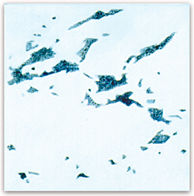 |
|
Oil on canvas 97 x 330 cm |
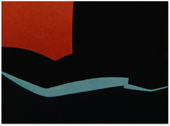 |
|
Oil on canvas 97 x 330 cm |
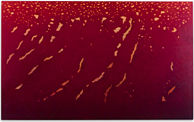 |
| Hillside 1995 Oil on canvas 170 x 275 cm |
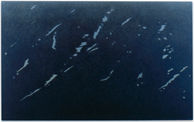 |
|
Oil on canvas 170 x 275 cm |
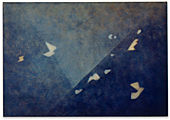 |
|
Oil on canvas 80 x 115 cm. |
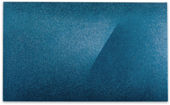 |
|
Oil on canvas 170 x 275 cm. |
|
|
|
|
|
|
|
|